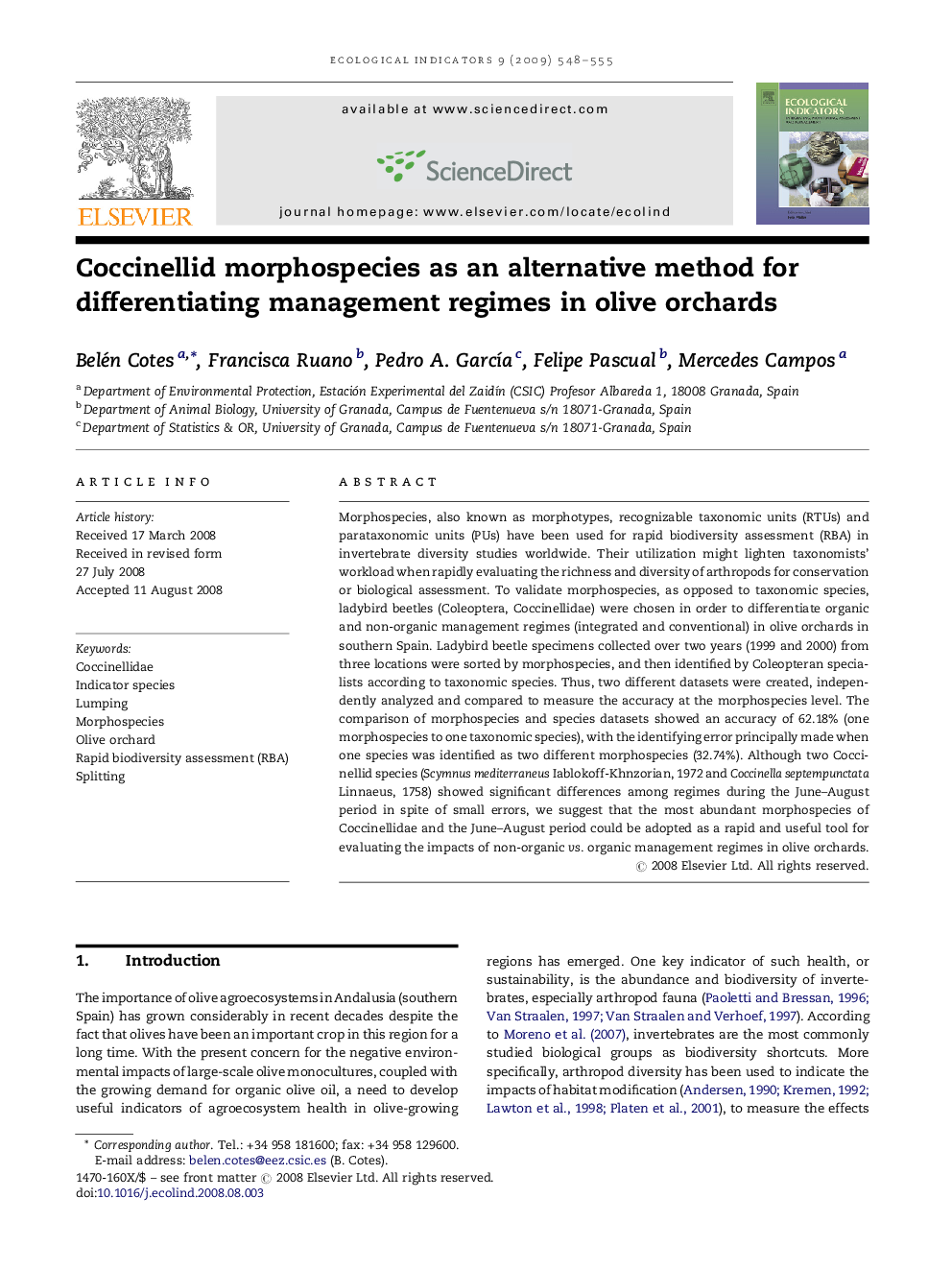| Article ID | Journal | Published Year | Pages | File Type |
|---|---|---|---|---|
| 4374474 | Ecological Indicators | 2009 | 8 Pages |
Morphospecies, also known as morphotypes, recognizable taxonomic units (RTUs) and parataxonomic units (PUs) have been used for rapid biodiversity assessment (RBA) in invertebrate diversity studies worldwide. Their utilization might lighten taxonomists’ workload when rapidly evaluating the richness and diversity of arthropods for conservation or biological assessment. To validate morphospecies, as opposed to taxonomic species, ladybird beetles (Coleoptera, Coccinellidae) were chosen in order to differentiate organic and non-organic management regimes (integrated and conventional) in olive orchards in southern Spain. Ladybird beetle specimens collected over two years (1999 and 2000) from three locations were sorted by morphospecies, and then identified by Coleopteran specialists according to taxonomic species. Thus, two different datasets were created, independently analyzed and compared to measure the accuracy at the morphospecies level. The comparison of morphospecies and species datasets showed an accuracy of 62.18% (one morphospecies to one taxonomic species), with the identifying error principally made when one species was identified as two different morphospecies (32.74%). Although two Coccinellid species (Scymnus mediterraneus Iablokoff-Khnzorian, 1972 and Coccinella septempunctata Linnaeus, 1758) showed significant differences among regimes during the June–August period in spite of small errors, we suggest that the most abundant morphospecies of Coccinellidae and the June–August period could be adopted as a rapid and useful tool for evaluating the impacts of non-organic vs. organic management regimes in olive orchards.
